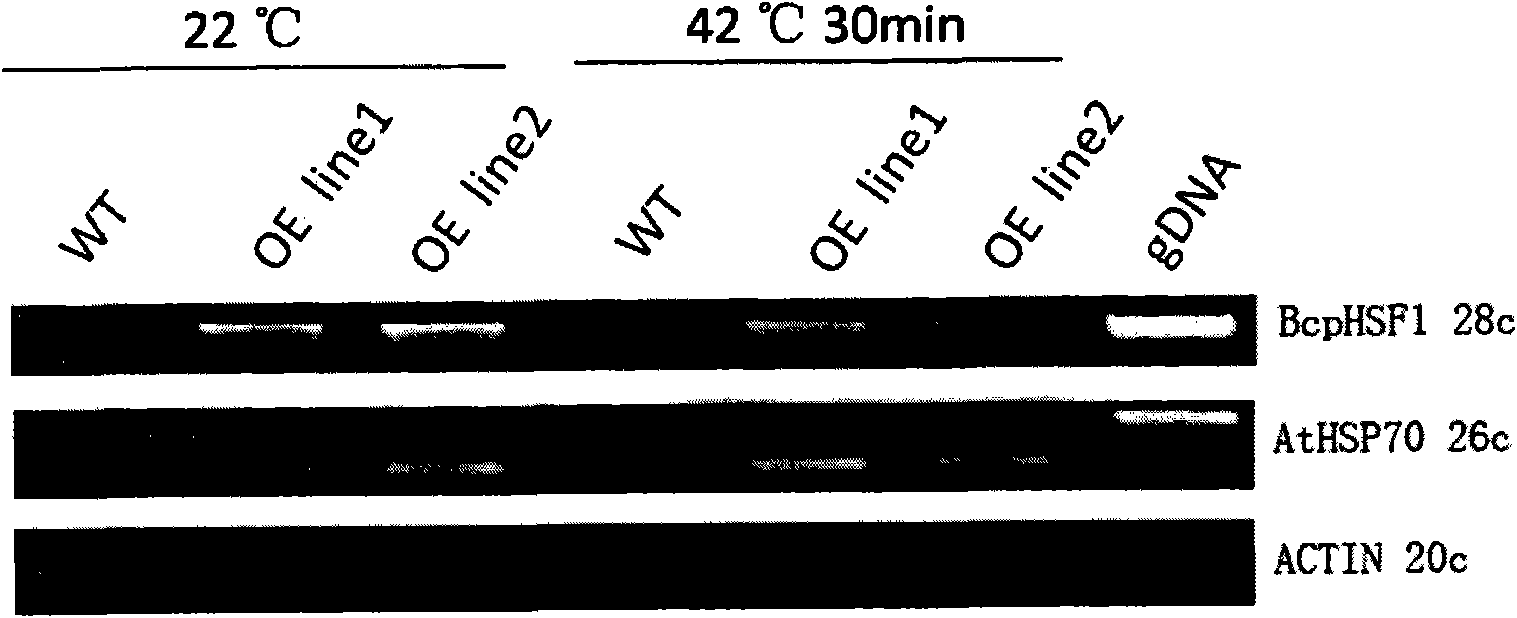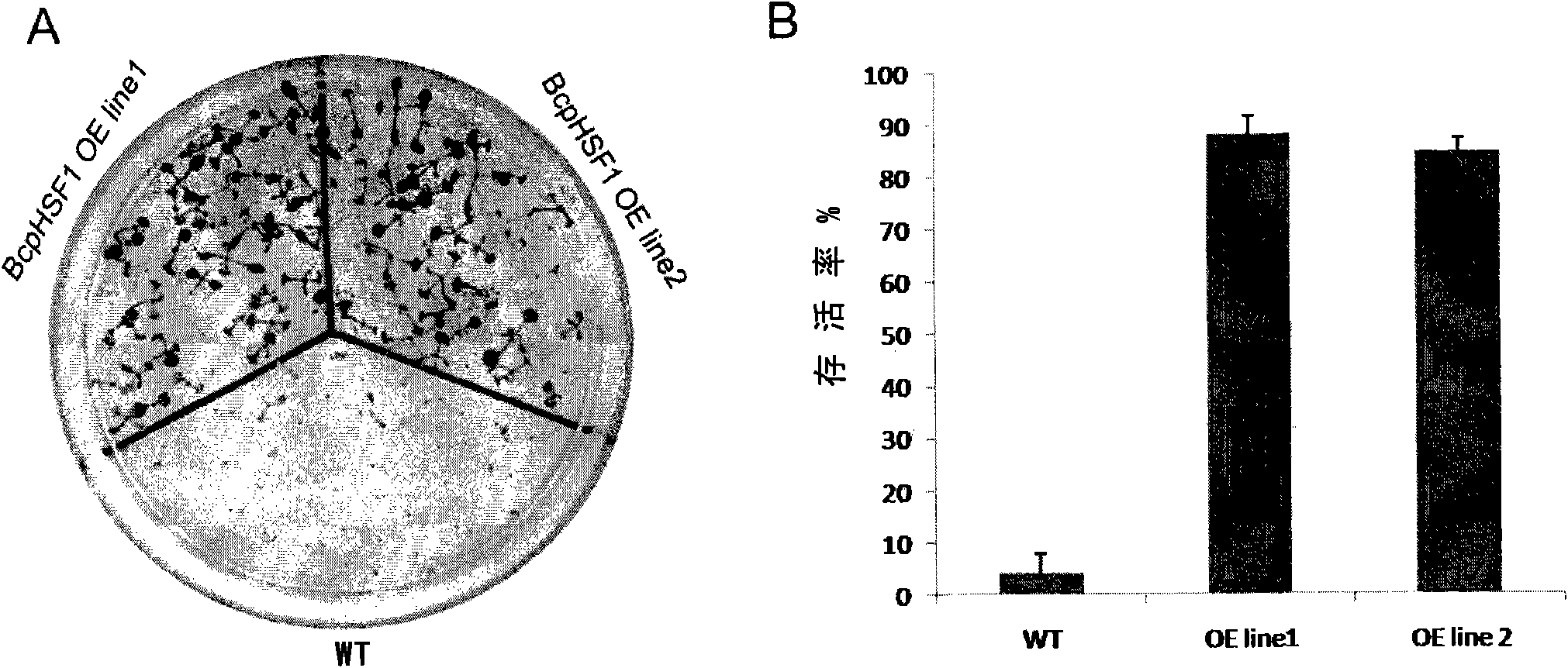Plant heat-resistant gene HSF1 and application thereof
A plant, plant cell technology, applied in the fields of biotechnology and botany
- Summary
- Abstract
- Description
- Claims
- Application Information
AI Technical Summary
Problems solved by technology
Method used
Image
Examples
preparation example Construction
[0153] Preparation and Transformation of Agrobacterium Competent Cells by Freeze-Thawing Method
[0154] a) Pick a single colony of GV3101 from a fresh plate cultured at 28°C for 48 hours, transfer it to 20ml LB liquid medium (rif 50mg / l, GM 5050mg / l), and culture overnight at 28°C 250rpm with shaking (not too thick) . (All operations below are carried out under sterile conditions).
[0155] b) After ice bathing for 20 minutes, divide the bacteria solution into 5 ml centrifuge tubes (each tube 4 ml), and ice bath for 10 minutes.
[0156] c) Centrifuge at 4000rpm (5-10°C) for 10 minutes, and discard the bacterial solution.
[0157] d) Add 1ml of fully pre-cooled 20mM CaCl to each tube 2 To resuspend the bacteria. Ice bath for 10 minutes.
[0158] e) Centrifuge at 4000 rpm (5-10° C.) for 10 minutes, and discard the supernatant.
[0159] f) Add 300μl 20mM CaCl to each tube 2 (Depending on the concentration of the bacteria), after merging, divide into 1.5ml centrifuge tubes...
Embodiment 1
[0184] Embodiment 1, the acquisition of gene
[0185] Gene expression in plants has spatiotemporal specificity, that is, different functional gene expression occurs under different time and space conditions. The present inventors measured the expression of functional genes in Chinese cabbage samples under different heat treatment conditions by extracting mRNA from different heat-treated Chinese cabbage plants and hybridizing with a chip containing all functional genes of Chinese cabbage. Conventional methods for detecting gene expression require large-scale sequencing, which can only detect a small amount of gene expression at a time and have low detection sensitivity. Using gene chip technology can not only detect gene expression levels with high sensitivity, but also quantitatively and qualitatively detect gene expression levels, and can simultaneously study thousands of genes in the same sample. expression of thousands of genes. The use of gene chip technology can not only...
Embodiment 2
[0189] Embodiment 2, RT-PCR detects the expression of candidate heat resistance gene after heat treatment
[0190] In order to identify the function of heat-resistant genes, the inventors constructed a 35S-driven overexpression plant vector 35S::BcpHSF1 (pCAMBIA1300-HSF1), and transformed it into Arabidopsis thaliana to obtain transgenic plants OE-line 1 and OE-line2.
[0191] In order to detect the expression pattern of heat resistance genes under heat treatment conditions, the inventors used RT-PCR to measure gene expression levels. See figure 1 , it was found that the downstream target gene HSP70 of BcpHSF1 in transgenic plants 35S::BcpHSF1 was strongly expressed after heat treatment.
PUM
 Login to View More
Login to View More Abstract
Description
Claims
Application Information
 Login to View More
Login to View More - R&D Engineer
- R&D Manager
- IP Professional
- Industry Leading Data Capabilities
- Powerful AI technology
- Patent DNA Extraction
Browse by: Latest US Patents, China's latest patents, Technical Efficacy Thesaurus, Application Domain, Technology Topic, Popular Technical Reports.
© 2024 PatSnap. All rights reserved.Legal|Privacy policy|Modern Slavery Act Transparency Statement|Sitemap|About US| Contact US: help@patsnap.com










